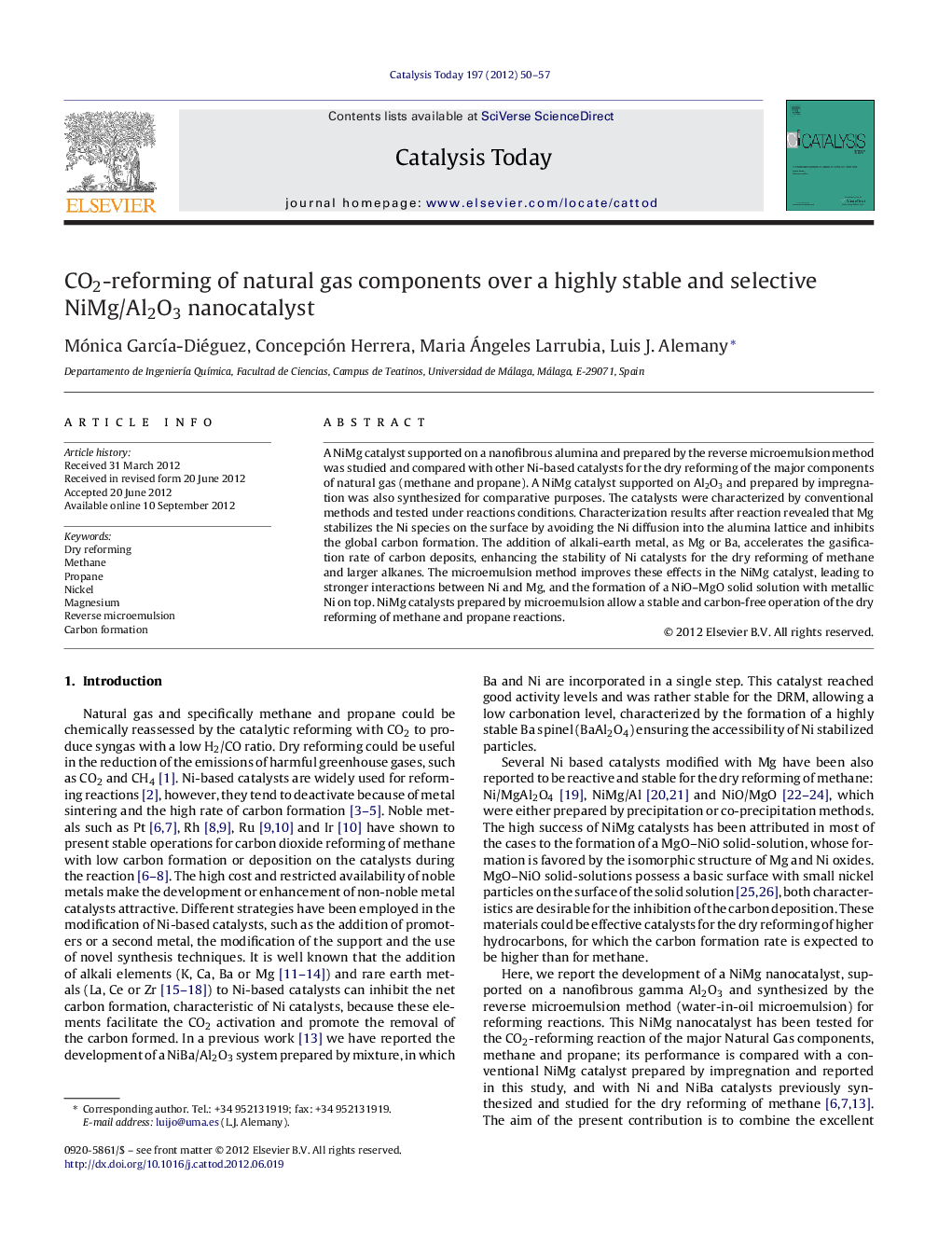| Article ID | Journal | Published Year | Pages | File Type |
|---|---|---|---|---|
| 55308 | Catalysis Today | 2012 | 8 Pages |
A NiMg catalyst supported on a nanofibrous alumina and prepared by the reverse microemulsion method was studied and compared with other Ni-based catalysts for the dry reforming of the major components of natural gas (methane and propane). A NiMg catalyst supported on Al2O3 and prepared by impregnation was also synthesized for comparative purposes. The catalysts were characterized by conventional methods and tested under reactions conditions. Characterization results after reaction revealed that Mg stabilizes the Ni species on the surface by avoiding the Ni diffusion into the alumina lattice and inhibits the global carbon formation. The addition of alkali-earth metal, as Mg or Ba, accelerates the gasification rate of carbon deposits, enhancing the stability of Ni catalysts for the dry reforming of methane and larger alkanes. The microemulsion method improves these effects in the NiMg catalyst, leading to stronger interactions between Ni and Mg, and the formation of a NiO–MgO solid solution with metallic Ni on top. NiMg catalysts prepared by microemulsion allow a stable and carbon-free operation of the dry reforming of methane and propane reactions.
Graphical abstractFigure optionsDownload full-size imageDownload high-quality image (172 K)Download as PowerPoint slideHighlights► NiMg catalysts stable and selective for CO2-reforming of Natural Gas components. ► Microemulsion enhances NiMg interactions, avoids migration of Ni or Mg into alumina. ► Net C from the coupling between carbon formation and its elimination by CO2-gasification. ► Alkaline elements possess a high capacity for carbon gasification by CO2. ► Carbon inhibition by alkaline is enhanced by microemulsion method.
